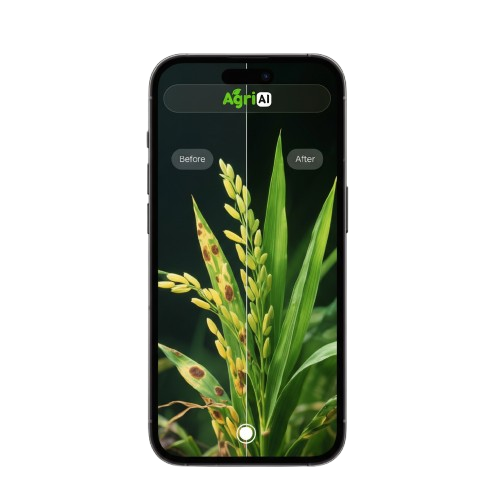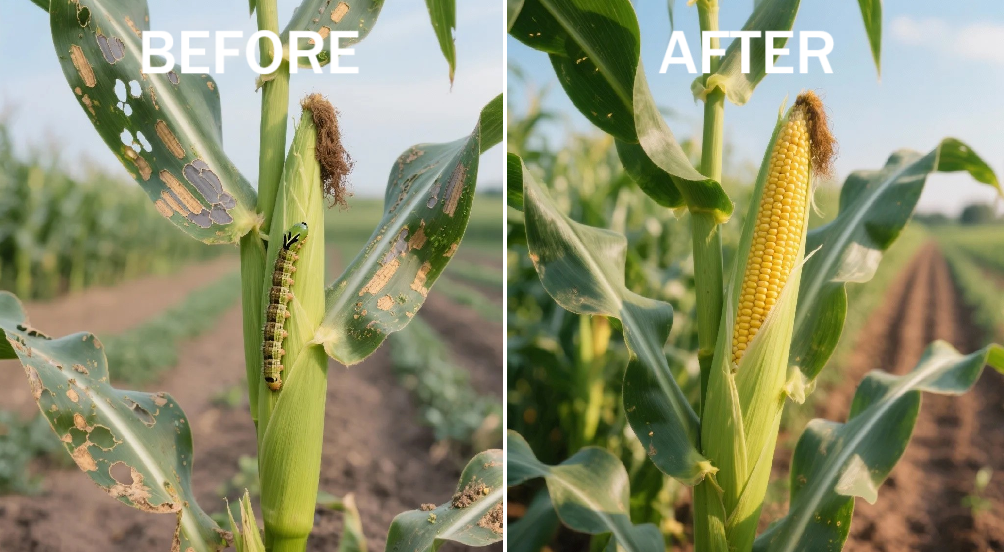Smart Farming Redefined
Transform your agricultural operations with cutting-edge AI technology. Get instant crop diagnostics, disease prevention, and expert agronomic advice - all in your pocket.

Transform your agricultural operations with cutting-edge AI technology. Get instant crop diagnostics, disease prevention, and expert agronomic advice - all in your pocket.

Access powerful AI-driven tools completely free. Our comprehensive suite of features helps farmers make informed decisions and optimize their agricultural practices.
Get personalized farming advice from our AI-powered virtual agronomist. Receive tailored recommendations based on your specific crops, location, and farming conditions.
Instantly identify nutrient deficiencies in your crops by simply taking a photo. Our AI analyzes leaf color, patterns, and symptoms to provide accurate diagnoses.
Early detection of crop diseases with 80% Accuracy*. Identify fungal, bacterial, and viral infections before they spread and damage your entire crop.
Quickly identify harmful pests and insects affecting your crops. Get instant treatment recommendations and prevention strategies to protect your harvest.
Identify problematic weeds in your fields and receive targeted herbicide recommendations. Optimize your weed management strategy with precision agriculture.
Access hyperlocal weather forecasts, soil moisture data, and climate insights. Get spray recommendations based on optimal weather conditions for maximum effectiveness.
Stay updated with the latest agricultural news, market prices, government policies, and industry trends that affect your farming operations.
Connect with agricultural experts and fellow farmers. Ask complex agronomy questions and get answers from certified professionals and experienced farmers.
Witness the remarkable difference AgrIAI makes in crop health and yield. Our AI-powered diagnostics and treatment recommendations help farmers transform diseased crops into healthy, productive plants.
From identifying nutrient deficiencies to preventing pest damage, AgrIAI provides the insights you need to maximize your harvest and ensure sustainable farming practices.
Try Disease Scanner
Join thousands of farmers and agricultural professionals who are already using AgrIAI to increase yields, reduce costs, and farm more sustainably with AI-powered insights.
Tell us a bit about yourself and what you’re looking for. We’ll get back to you shortly.
Email us anytime:
support@agriai.liveWe typically respond within 1–2 business days.
Your information is protected and used only to contact you regarding your inquiry.